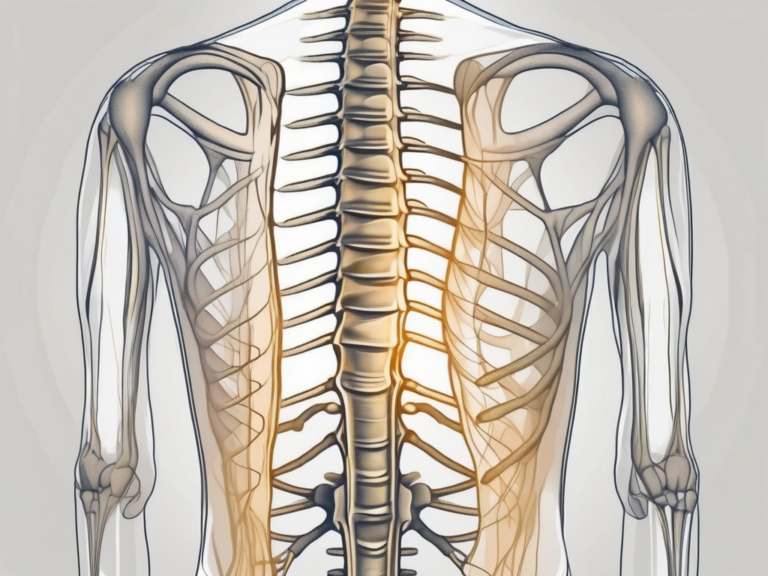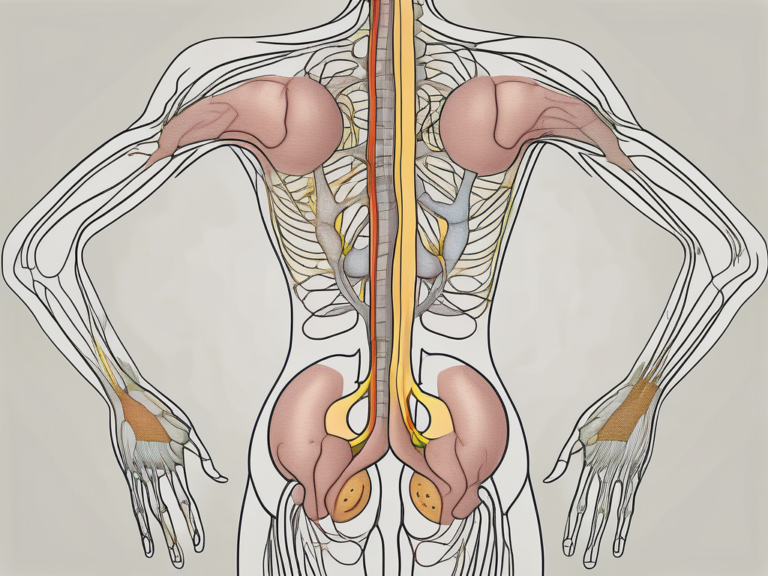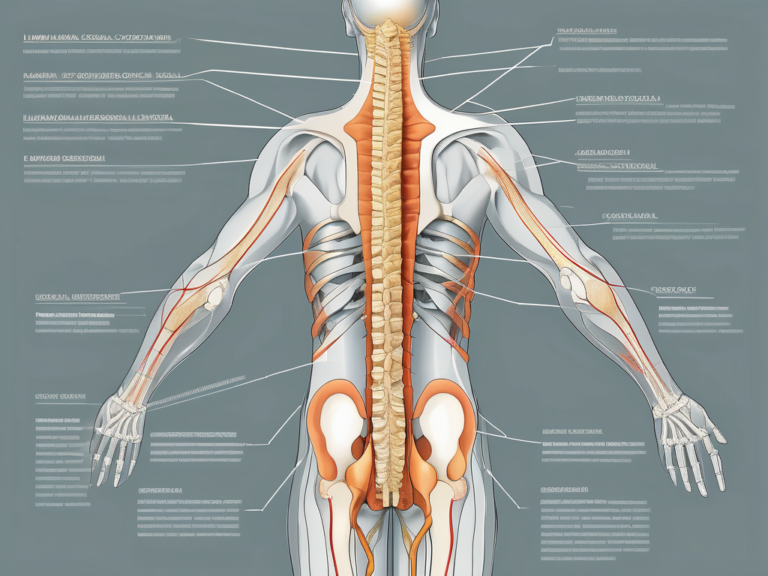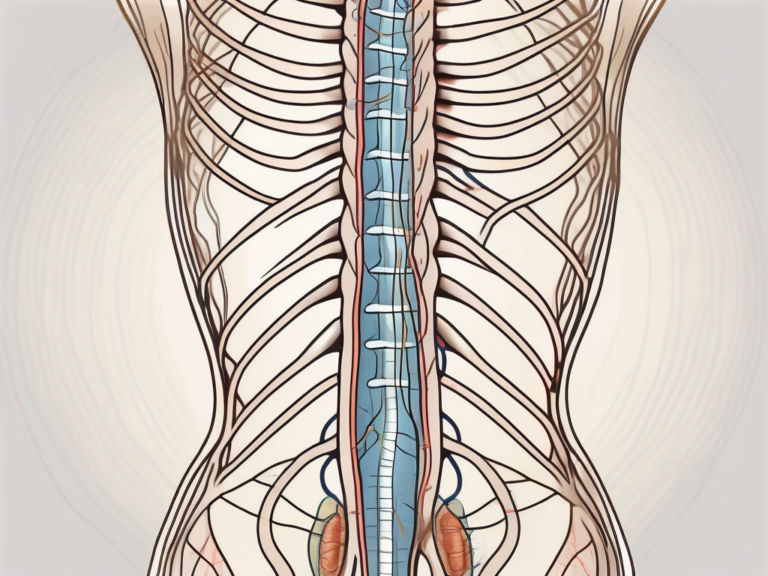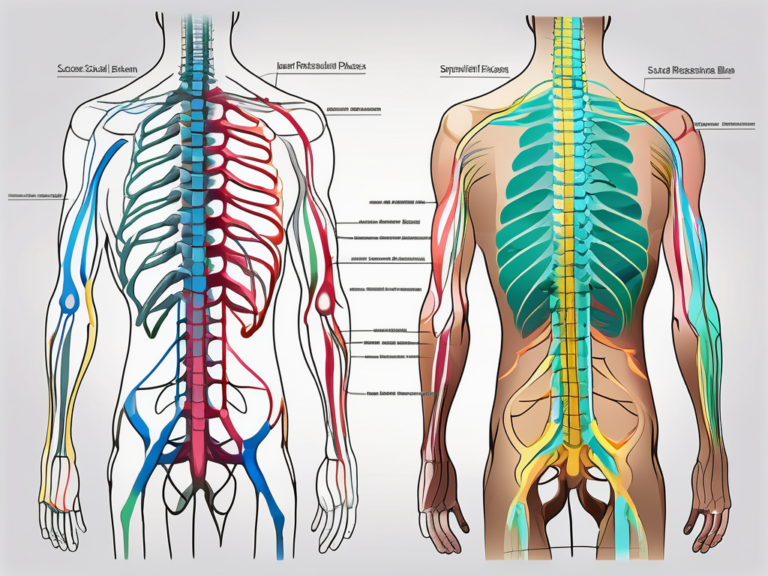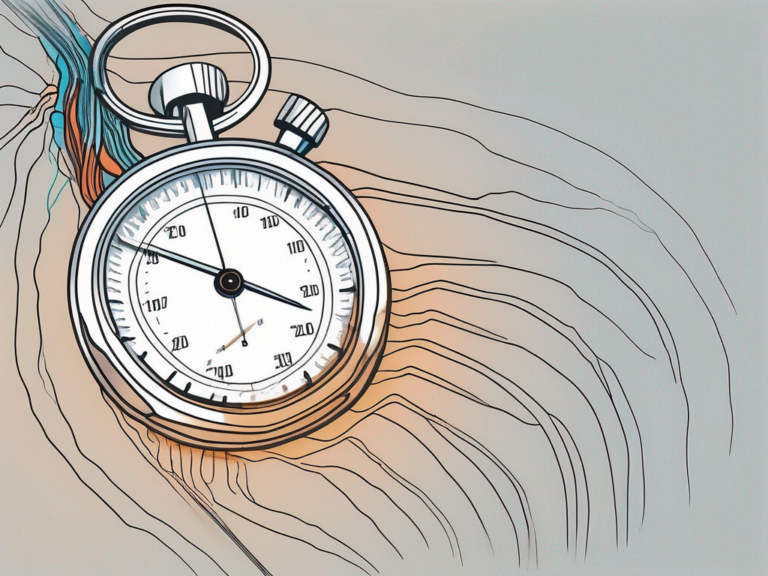What Is Sacral Nerve Stimulation for Urinary Incontinence?
Urinary incontinence is a condition that affects millions of people around the world. It is characterized by the involuntary leakage of urine, which can be embarrassing and greatly impact one’s quality of life. While there are various treatment options available, sacral nerve stimulation has emerged as an effective solution for many individuals dealing with this condition. In this article, we will explore the ins and outs of sacral nerve stimulation and how it can help those suffering from urinary incontinence.
Understanding Urinary Incontinence
Before delving into the details of sacral nerve stimulation, it’s essential to have a clear understanding of what urinary incontinence entails. Urinary incontinence refers to the inability to control the release of urine, resulting in unexpected leakage. This condition can vary in severity, ranging from occasional minor leaks to complete loss of bladder control. It can occur in both men and women, although it tends to affect women more frequently.
Urinary incontinence can have a significant impact on a person’s quality of life, causing embarrassment, social isolation, and even psychological distress. It is estimated that millions of people worldwide experience urinary incontinence at some point in their lives.
The Anatomy of the Urinary System
To comprehend how sacral nerve stimulation works, it’s helpful to have some knowledge of the anatomy of the urinary system. The urinary system consists of several organs, including the kidneys, bladder, urethra, and sphincter muscles. Each of these components plays a crucial role in the complex process of urine formation and elimination.
The kidneys, located in the upper abdominal area, are responsible for filtering waste products from the blood and producing urine. They perform a vital function in maintaining the body’s fluid balance and eliminating toxins. The urine produced by the kidneys then travels through two narrow tubes called ureters, which connect the kidneys to the bladder.
The bladder, a hollow muscular organ located in the lower abdomen, serves as a temporary storage reservoir for urine. It expands as it fills up and contracts when it’s time to empty. The bladder’s ability to stretch and contract is controlled by a complex interplay of nerves and muscles.
The urethra, a tube-like structure, connects the bladder to the external opening of the body. It serves as a conduit for urine to exit the body. The urethra is surrounded by sphincter muscles, which act as a valve to control the flow of urine. These muscles can be voluntarily contracted to prevent urine leakage or relaxed to allow the release of urine.
Common Causes of Urinary Incontinence
Urinary incontinence can have various underlying causes, and understanding them is crucial in determining the most appropriate treatment. Some common causes include:
- Pregnancy and childbirth: The physical changes that occur during pregnancy and the stress placed on the pelvic floor muscles during childbirth can weaken the muscles that control urine flow.
- Menopause: The hormonal changes that occur during menopause can lead to a decline in the strength and elasticity of the tissues in the urinary tract, increasing the risk of incontinence.
- Prostate problems: In men, an enlarged prostate or prostate surgery can interfere with the normal functioning of the urinary system, leading to urinary incontinence.
- Nerve damage: Conditions such as diabetes, multiple sclerosis, and spinal cord injuries can damage the nerves that control bladder function, resulting in incontinence.
- Bladder muscle weakness: Weakness in the muscles of the bladder can cause it to contract involuntarily, leading to urinary incontinence.
If you are experiencing urinary incontinence, it is highly recommended to consult with a healthcare professional who can assess your specific situation and provide appropriate advice and treatment. Treatment options for urinary incontinence range from lifestyle modifications and pelvic floor exercises to medications and surgical interventions. The choice of treatment depends on the underlying cause, severity of symptoms, and individual preferences.
Introduction to Sacral Nerve Stimulation
Sacral nerve stimulation is a minimally invasive medical procedure that aims to improve bladder control for individuals with urinary incontinence. It involves the use of a small device that is implanted under the skin to stimulate the sacral nerves, which play a vital role in bladder function and control.
The Role of Sacral Nerves in Bladder Control
The sacral nerves, located in the lower part of the spinal cord, are responsible for transmitting signals between the brain and the bladder. These nerves play a crucial role in regulating bladder contractions and the relaxation of the sphincter muscles. When these nerves are not functioning optimally, urinary incontinence may occur.
Bladder control is a complex process that involves a delicate balance between the muscles and nerves in the pelvic region. The sacral nerves act as a communication pathway, relaying signals between the brain and the bladder. When the bladder is full, the sacral nerves send a message to the brain, triggering the sensation of needing to urinate. In response, the brain sends signals back to the bladder, instructing it to contract and the sphincter muscles to relax, allowing urine to be expelled.
However, in individuals with urinary incontinence, this communication process is disrupted. The sacral nerves may not send the proper signals to the brain, or the brain may not respond appropriately. As a result, the bladder may contract involuntarily, leading to leakage or an inability to control urination.
The Science Behind Sacral Nerve Stimulation
The precise mechanism of action of sacral nerve stimulation is not yet fully understood. However, it is believed that the electrical impulses generated by the implanted device help modulate the sacral nerves, resulting in improved bladder control. The stimulation can be adjusted based on the individual’s specific needs, providing a tailored solution for managing urinary incontinence.
During the sacral nerve stimulation procedure, a small device, similar to a pacemaker, is implanted under the skin near the sacral nerves. This device is connected to thin wires, called leads, which are placed near the sacral nerves. Once the device is activated, it delivers mild electrical impulses to the sacral nerves, stimulating them and restoring proper communication between the brain and the bladder.
The electrical impulses generated by the device are carefully calibrated to ensure optimal results. The stimulation can be adjusted by a healthcare professional, allowing for personalized treatment based on the individual’s symptoms and response to therapy. Some individuals may require a higher level of stimulation, while others may need a lower level to achieve the desired effect.
Research has shown that sacral nerve stimulation can be an effective treatment option for individuals with urinary incontinence who have not responded to other conservative therapies. It offers a minimally invasive alternative to more invasive surgical procedures, such as bladder augmentation or urinary diversion. Additionally, sacral nerve stimulation has been found to have a high success rate, with many individuals experiencing significant improvement in bladder control and quality of life.
It is important to note that sacral nerve stimulation may not be suitable for everyone with urinary incontinence. A thorough evaluation by a healthcare professional is necessary to determine if this treatment option is appropriate. Additionally, like any medical procedure, sacral nerve stimulation carries some risks, including infection, pain at the implant site, and device malfunction. However, these risks are generally low, and the benefits of improved bladder control often outweigh the potential drawbacks.
The Procedure of Sacral Nerve Stimulation
Undergoing sacral nerve stimulation involves a series of steps, from preparation to post-procedure care. While it is considered a relatively safe and effective treatment option, it is important to consult with a healthcare professional to determine if it is the right choice for you.
Preparing for the Procedure
Prior to the sacral nerve stimulation procedure, a thorough assessment will be conducted to ensure you are a suitable candidate. This may involve various tests, such as urodynamic studies, to evaluate bladder function. Additionally, it is essential to discuss any medical conditions, medications, or allergies with your healthcare team to minimize potential risks.
During the preparation phase, your healthcare provider will explain the procedure in detail, addressing any concerns or questions you may have. They will also provide you with instructions on how to prepare for the procedure, such as fasting requirements and medication adjustments. It is important to follow these instructions carefully to ensure the best possible outcome.
Furthermore, you may be asked to undergo additional imaging tests, such as an MRI or CT scan, to provide your healthcare team with a clear picture of the area where the lead and device will be placed. This will help ensure accurate placement and optimal results.
Step-by-step Process of Sacral Nerve Stimulation
The actual procedure involves placing a thin wire, also known as a lead, near the sacral nerves. This lead is connected to a small device, similar to a pacemaker, which is implanted under the skin. The lead and device work together to deliver electrical impulses to the sacral nerves, helping restore bladder control. The procedure is typically performed under local anesthesia, and most patients go home the same day.
Once you are in the operating room, you will be positioned comfortably on the surgical table. The healthcare team will ensure that you are adequately sedated and comfortable throughout the procedure. They will clean and sterilize the area where the lead and device will be implanted to minimize the risk of infection.
Next, your healthcare provider will make a small incision in the lower back or buttock area to access the sacral nerves. Using fluoroscopy, a real-time X-ray imaging technique, they will guide the lead to the targeted location near the sacral nerves. This precise placement is crucial for optimal results.
After the lead is in place, your healthcare provider will make another small incision to create a pocket under the skin where the device will be implanted. The device, which is about the size of a stopwatch, will be carefully inserted into the pocket. Once the device is in place, the incisions will be closed with sutures or surgical adhesive.
Before concluding the procedure, your healthcare provider will test the lead and device to ensure proper functioning. They will adjust the settings and program the device according to your specific needs. This customization allows for personalized treatment and optimal symptom management.
Following the procedure, you will be monitored in a recovery area to ensure that you are stable and comfortable. Your healthcare team will provide you with instructions on post-procedure care, including wound care, activity restrictions, and medication management. It is important to follow these instructions diligently to promote healing and maximize the benefits of sacral nerve stimulation.
Regular follow-up appointments will be scheduled to monitor your progress and make any necessary adjustments to the device settings. Your healthcare provider will work closely with you to ensure that the treatment is effective and that you are experiencing improvements in bladder control and overall quality of life.
Benefits and Risks of Sacral Nerve Stimulation
When considering sacral nerve stimulation for urinary incontinence, it is important to weigh the potential benefits against the associated risks. While it can offer significant improvement in bladder control and quality of life for many individuals, it may not be suitable for everyone. Consulting with a healthcare professional is crucial to determine if the benefits outweigh the risks in your specific case.
Potential Benefits for Patients with Urinary Incontinence
For those who have not experienced satisfactory relief from other treatments, sacral nerve stimulation can bring about numerous advantages. Some potential benefits include:
- Reduced episodes of urinary incontinence
- Decreased urinary frequency and urgency
- Improved quality of life
- Decreased reliance on incontinence pads
Imagine a life where you no longer have to worry about embarrassing leaks or constantly searching for the nearest bathroom. Sacral nerve stimulation has the potential to make this a reality for individuals struggling with urinary incontinence. By targeting the nerves responsible for bladder control, this innovative treatment can significantly reduce the frequency of episodes and improve overall bladder function.
One of the most significant benefits of sacral nerve stimulation is the decrease in urinary frequency and urgency. Many individuals with urinary incontinence experience a constant urge to urinate, which can disrupt daily activities and cause significant discomfort. With this treatment, the nerves are stimulated in a way that helps regulate bladder function, resulting in a reduction in both frequency and urgency.
Improved quality of life is another advantage that sacral nerve stimulation can offer. Living with urinary incontinence can be emotionally and socially challenging, often leading to feelings of embarrassment, isolation, and a decreased sense of well-being. By effectively managing urinary incontinence, individuals can regain their confidence, participate in activities without fear, and enjoy a better overall quality of life.
Additionally, sacral nerve stimulation can reduce the reliance on incontinence pads. Many individuals with urinary incontinence rely on these pads as a temporary solution to manage leaks and accidents. However, with sacral nerve stimulation, the need for these pads can be significantly decreased or even eliminated altogether, providing individuals with a newfound freedom and confidence.
Possible Side Effects and Risks
As with any medical procedure, there are potential side effects and risks associated with sacral nerve stimulation. These can vary from person to person but may include:
- Infection or pain at the implantation site
- Lead displacements or malfunctions
- Temporary discomfort or skin irritation
- Interference with other medical devices
While sacral nerve stimulation offers promising benefits, it is important to be aware of the potential risks involved. Infection or pain at the implantation site is a possible side effect, although it is relatively rare. Your healthcare team will take all necessary precautions to minimize the risk of infection and ensure a successful procedure.
Lead displacements or malfunctions can also occur, although they are uncommon. These issues can lead to a loss of effectiveness in the treatment and may require additional interventions or adjustments. Your healthcare team will closely monitor the functioning of the device and address any concerns that may arise.
Temporary discomfort or skin irritation at the site of stimulation is another potential side effect. This discomfort is usually mild and resolves on its own over time. Your healthcare team will provide guidance on how to manage any discomfort or irritation that may occur during the initial stages of treatment.
Lastly, sacral nerve stimulation may interfere with other medical devices. It is important to inform your healthcare team about any existing implants or devices you have to ensure compatibility and minimize any potential risks or complications.
Your healthcare team will discuss these risks with you in detail and address any concerns or questions you may have before proceeding with the procedure. They will carefully evaluate your individual case and determine if sacral nerve stimulation is the right treatment option for you, taking into account the potential benefits and risks involved.
Post-procedure Care and Maintenance
Following the sacral nerve stimulation procedure, proper care and maintenance of the implanted device are essential for optimal function and longevity.
What to Expect After the Procedure
After the procedure, you may experience some discomfort or soreness around the implantation site. Your healthcare team will provide specific instructions on how to manage any post-procedure pain or discomfort. It is essential to follow these guidelines and attend any follow-up appointments as scheduled to ensure proper healing and monitor the device’s performance.
Long-term Care and Maintenance of the Device
Over time, it may be necessary to make adjustments to the stimulation settings of the implanted device. These adjustments can be made by a healthcare professional to suit your changing needs. Regular check-ups are typically recommended to assess the device’s function, address any issues, and ensure ongoing effectiveness in managing urinary incontinence.
Frequently Asked Questions about Sacral Nerve Stimulation
Below are some commonly asked questions regarding sacral nerve stimulation for the treatment of urinary incontinence.
Is Sacral Nerve Stimulation Painful?
The procedure itself is typically performed under local anesthesia, which numbs the area and minimizes discomfort. However, some individuals may experience mild discomfort or soreness afterward. This can usually be managed with over-the-counter pain relievers as recommended by your healthcare team.
How Effective is Sacral Nerve Stimulation in Treating Urinary Incontinence?
Sacral nerve stimulation has shown promising results in improving bladder control for many individuals with urinary incontinence. However, effectiveness can vary from person to person, and it may not provide complete resolution for everyone. Consulting with a healthcare professional is crucial in determining if sacral nerve stimulation is the right treatment option for your specific situation.
In conclusion, sacral nerve stimulation has emerged as a valuable treatment modality for individuals dealing with urinary incontinence. It offers the potential for improved bladder control and quality of life. However, it is essential to consult with a healthcare professional who can assess your specific needs and guide you through the decision-making process. With proper evaluation, care, and ongoing follow-up, sacral nerve stimulation can be a life-changing solution for those affected by urinary incontinence.

